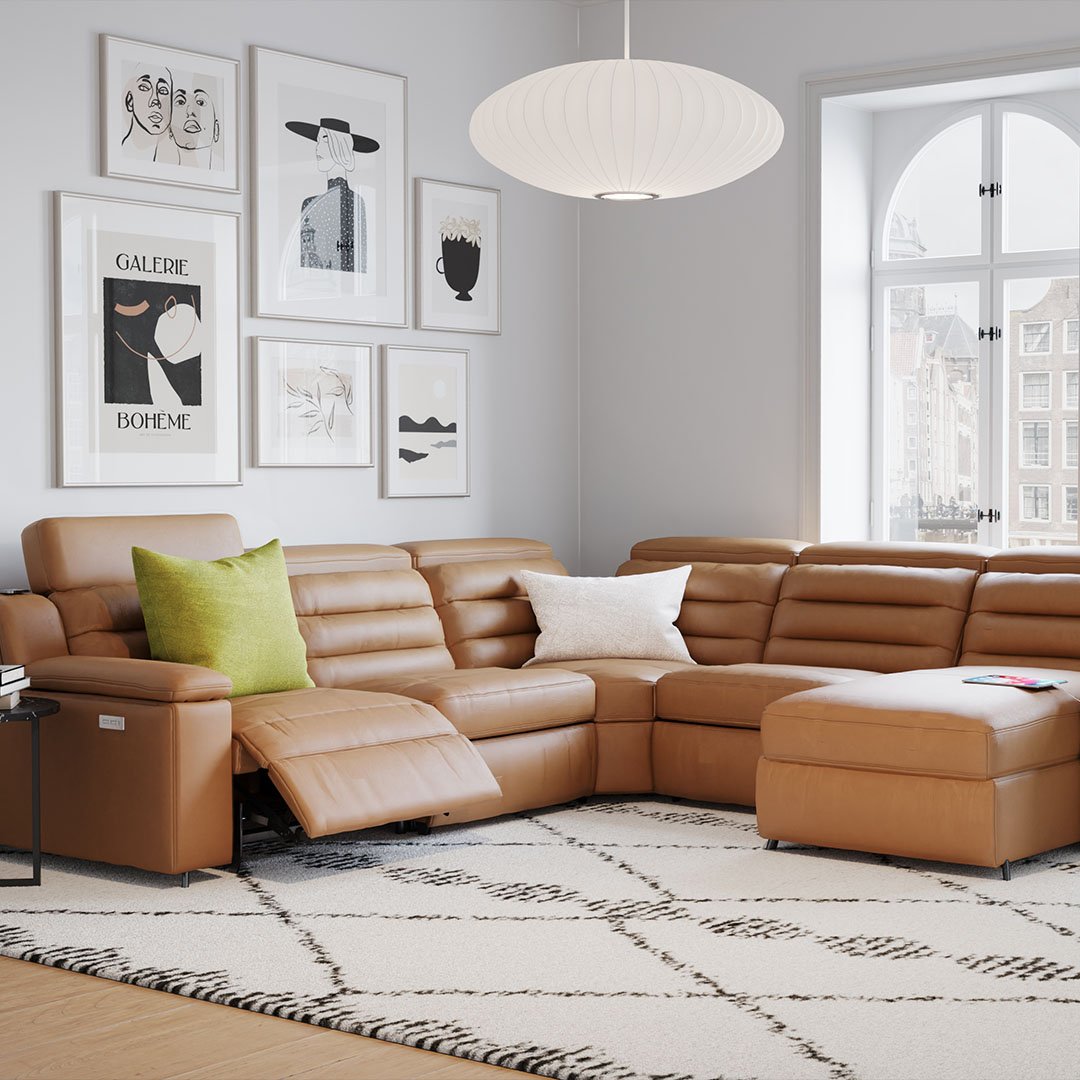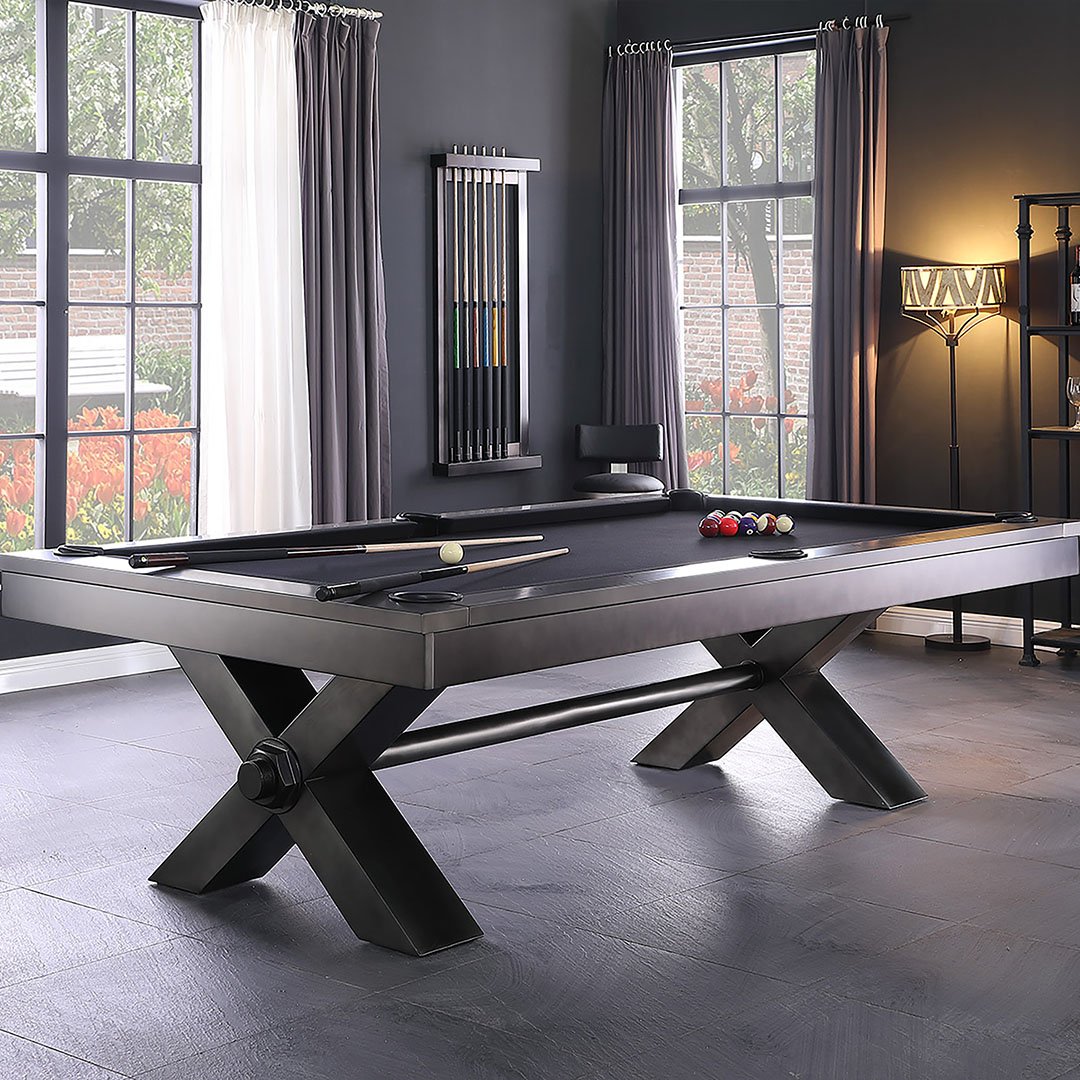Leather Furniture: Keep it Real or Go Faux?
When selecting furniture, the options for upholstery and fabric choices can be overwhelming, even when looking within the same category, like performance fabric or velvet.
A popular choice for many is leather, but just like any fabric or material, not all is created equal and understanding the differences between real and faux leather can help you decide which will be best for you and your lifestyle.

Real Leather
Real leather, also known as natural leather, is available in a few different varieties. Real leather will offer the most durability and highest-quality between a real or faux leather, but that isn’t to say it’s always the best choice.
Full grain leather, a natural leather, is made from the top layer of an animal’s hide, typically cow hide. Because of its thickness, it’s incredibly durable, but can be difficult for manufacturers to work with. It also comes with natural imperfections based on the animal’s lifestyle, such as brushes along fences or trees. When wanting a natural, high-quality look with durability, a full grain leather couch is the best choice.
For those who seek more of a vintage feel rather than a natural feel, you can opt for an aniline-dyed full grain leather option. This specific dye enhances the natural patterns and imperfections found in full grain leather offering a more worn and traditional looking piece as time goes by.
Did You Know? Patina is the name for the pattern created over time on materials, such as leather, metal, and wood.
Embossed grain leather is another natural option where a pattern is stamped into the leather, removing those natural patterns and imperfections. Embossed grain leather is commonly used in manufacturing because it is easy to replicate and keep a consistent look between pieces.
Bonded Leather
Bonded leather is your in-between real and faux option. Made from the scraps and fibers leftover from manufacturing full grain leather, the pieces are mixed together with a binder and adhered to a paper backing and finished with a polyurethane finish. Typically they will then be embossed to resemble the texture of leather.
Because of the process bonded leather goes through, it is typically softer than regular full grain leather, but less durable because of the processing. Bonded leather contains 10-20% real leather, which is why it’s a in-between option.
Bonded leather offers a real leather look and feel while also being environmentally conscious by not wasting materials. Bonded leather is the most cost-effective choice for leather as it’s less than your full grain and faux leather options.
Faux Leather
Faux leather can be a great choice for many reasons. The most common reason being the lack of animal products used to create it, which means a vegan option. Another reason many people opt for faux is the low maintenance required while still achieving the look of leather.
There are two types of faux leather available.
Polyurethane leather, known as PU leather, is an artificial and fully vegan option made from applying a polyurethane finish to a fabric such as nylon, rayon, polyester, and others. PU leather is stamped, similar to bonded leather, into patterns to resemble embossed leather, fooling the eye to believe it's real leather.
PVC leather, sometimes called vinyl leather, is another faux leather option created by combining polyvinyl chloride with lubricants, stabilizers, and other elements over a fabric such as cotton, polyester, or rayon. PVC leather has more layers than PU leather, making this a more durable faux leather option, but less flexible to work with.
Faux leathers are less maintenance, lower cost, and more ethically produced. Faux leather is a great option for achieving a leather look without worry of stains, especially for families with small children or pets. While they won’t last as long as their real counterparts, you can still achieve.
Want to see how these options stack up? Check out this chart below.
|
|
Real Leather |
Bonded Leather |
Faux Leather |
|---|---|---|---|
|
Cost |
Most expensive. |
Least expensive. |
A little more than bonded leather. |
|
Durability |
Best durability and won’t crack or peel over time, but rather will develop a patina pattern through use. | Less durable because of processing procedures and more likely to crack, tear and wear away quickly. | Will not last as long as real leather, but more durable than bonded leather. Easy to puncture or tear. |
|
Maintenance |
Most susceptible to stains and difficult to clean. Needs to be treated to prevent wear and tear. | Most difficult to clean because of thin layer which are easy to crack and peel. | Easiest to clean and can even be stain and fade resistant. |
|
Appearance |
Most natural appearance, but will show imperfections and limited in colors. | Looks the most synthetic and is noticeably thin compared to real or faux. | Can have a vinyl or plastic look and feel, more uniform look. PU can look the most like real leather. |
|
Sustainability |
Takes longer to make and can post concerns for those who prefer animal-free products. | Environmentally conscious using scraps, but can emit chemicals from processing procedures. | No harm to animals, but materials used take longer to break down and decompose. |
Which One Should You Choose?
Now that you know the differences in the real and faux leather options, that choice will come down to your preference, values, and budget.
If you’re looking for that iconic worn leather look and feel that’s durable, traditional, and has character, then a full grain real leather option is best for you.
If you care about the manufacturing process and want to avoid animal products while having an option that looks and feels the same, but also less maintenance, than a faux leather option is best for you.
Either way, it will come down to your preference, your budget, and your style.
Whichever option you choose, Watson’s has the selection of both real and faux leather pieces to align with your preferences. Stop in today to see for yourself and see if you can spot the differences in person! Not sure still which to choose? Contact one of our design experts today.










